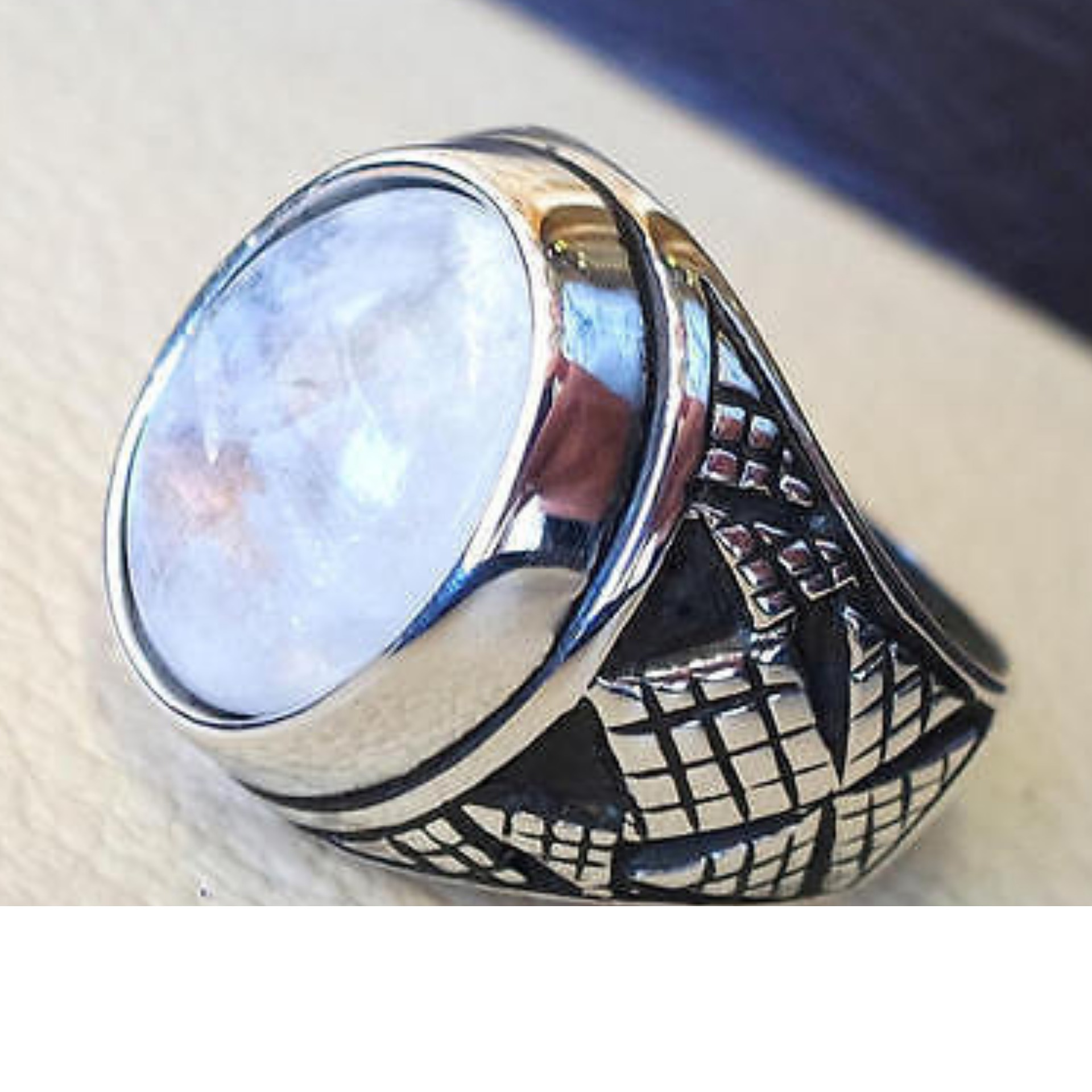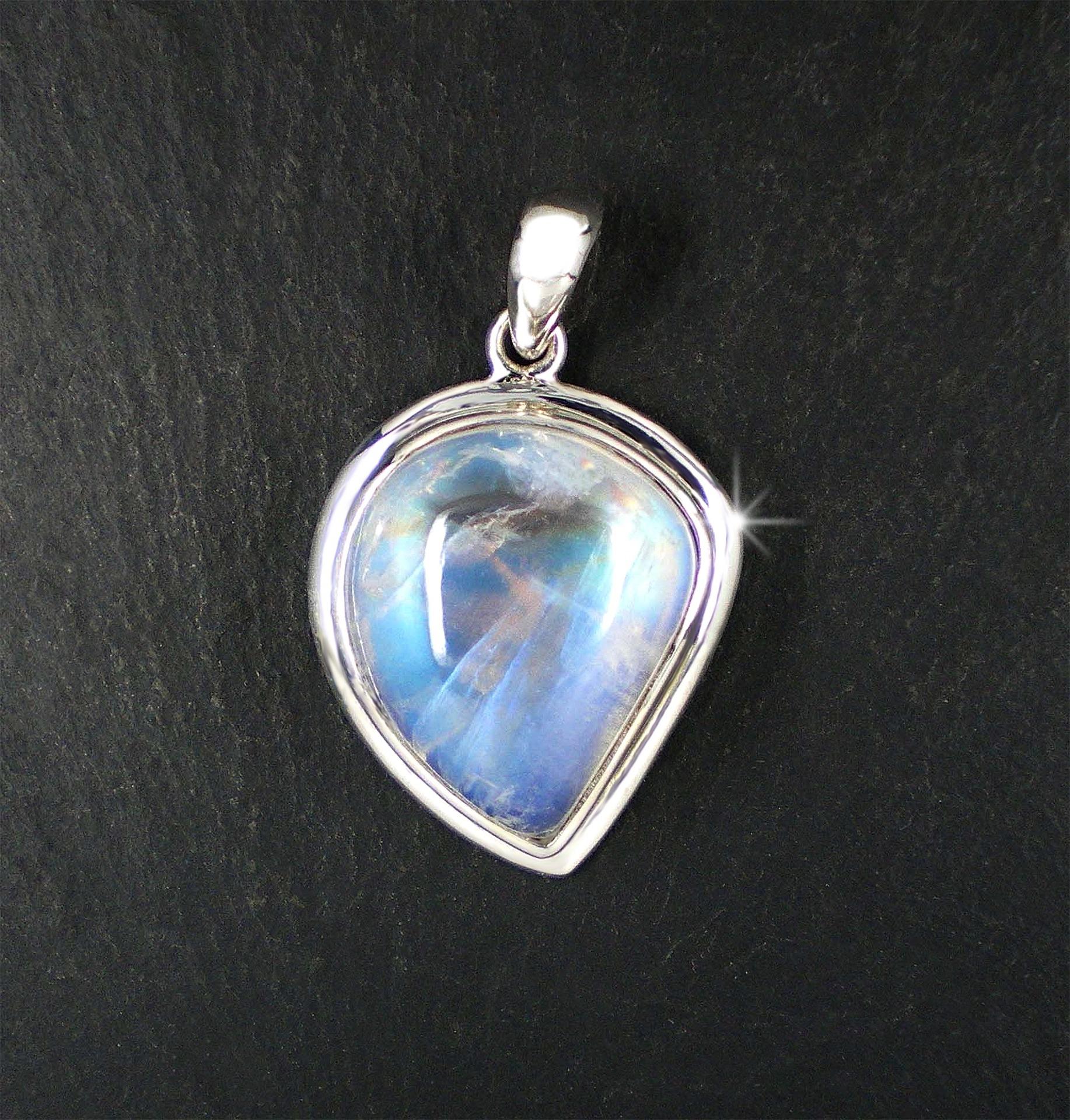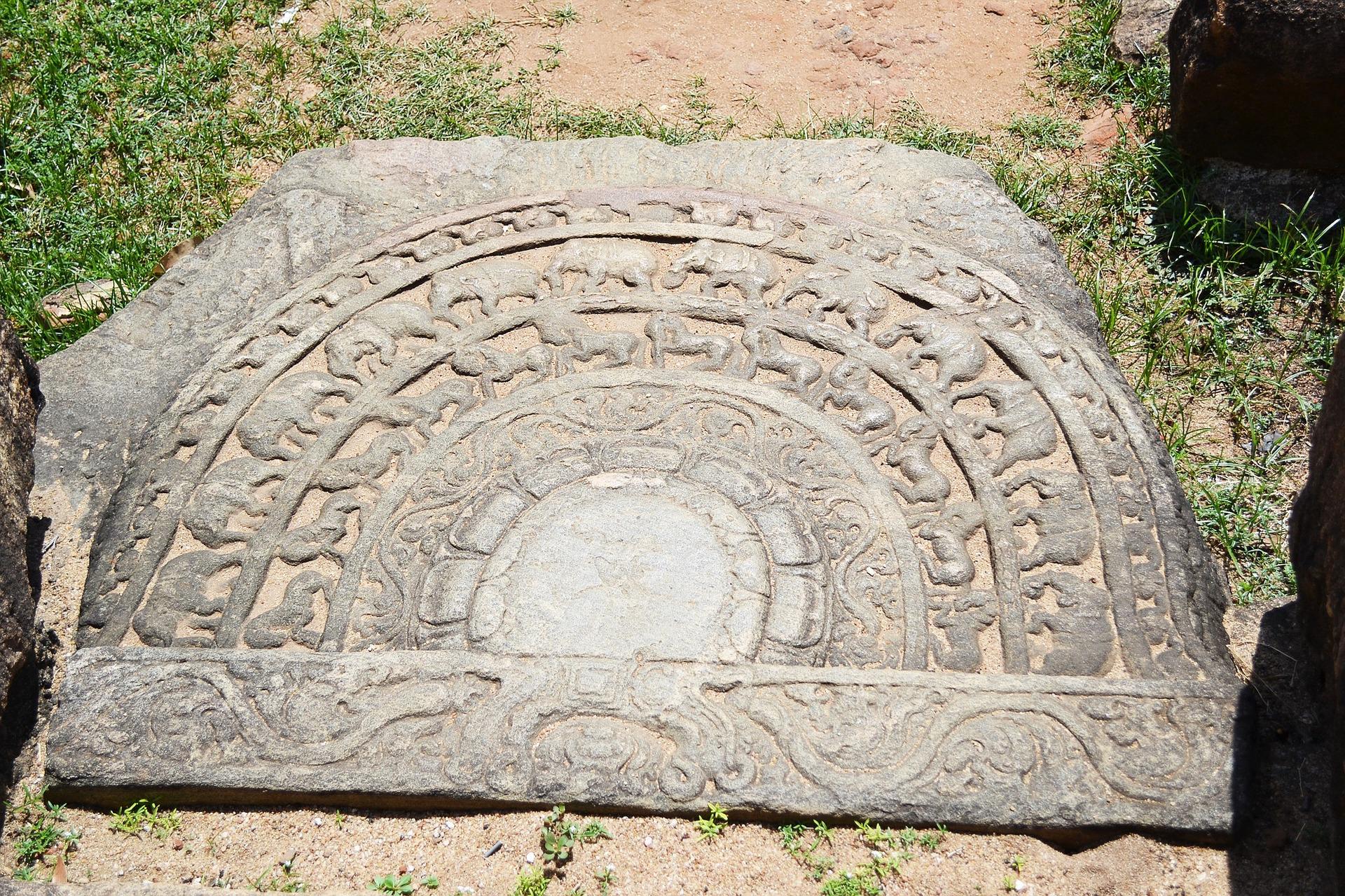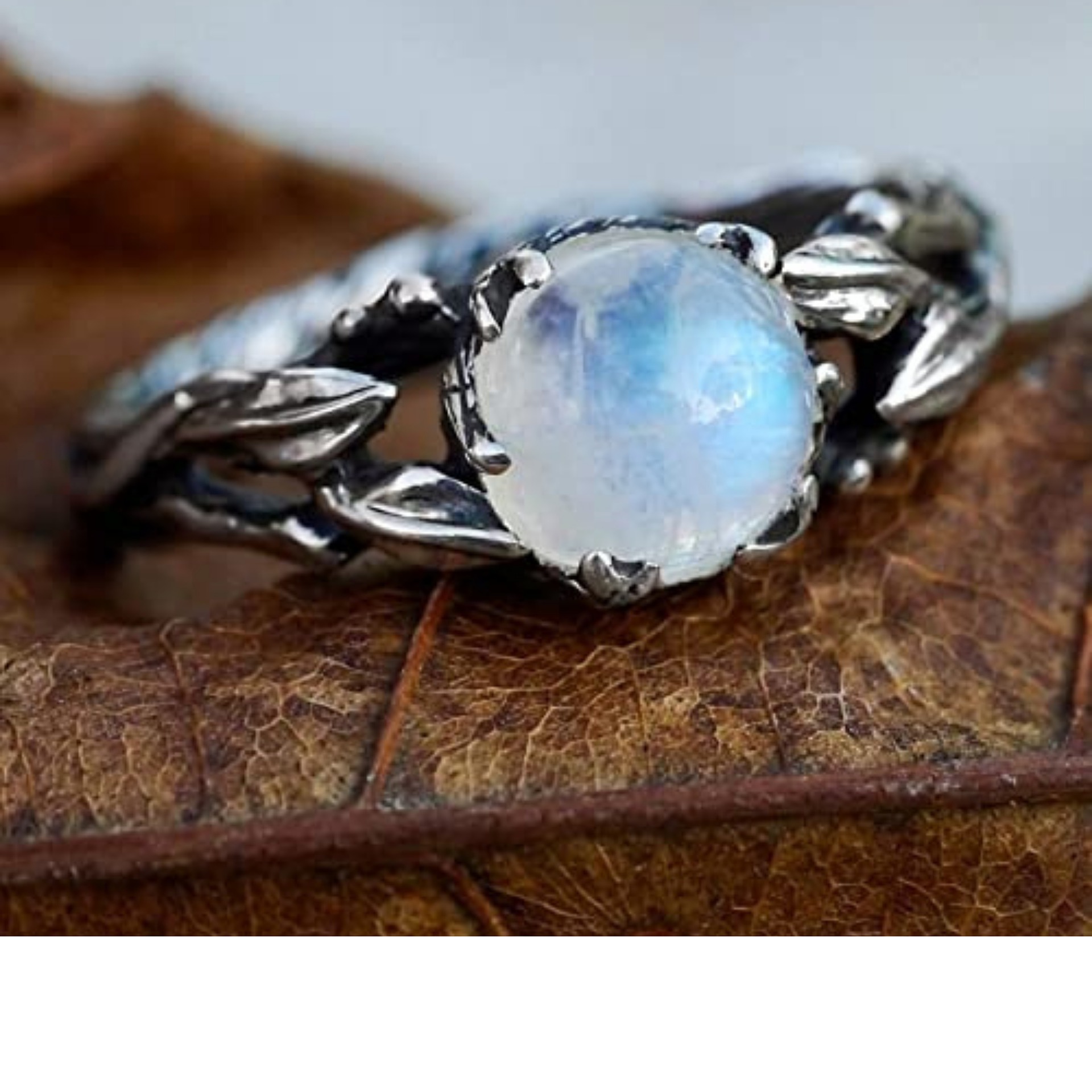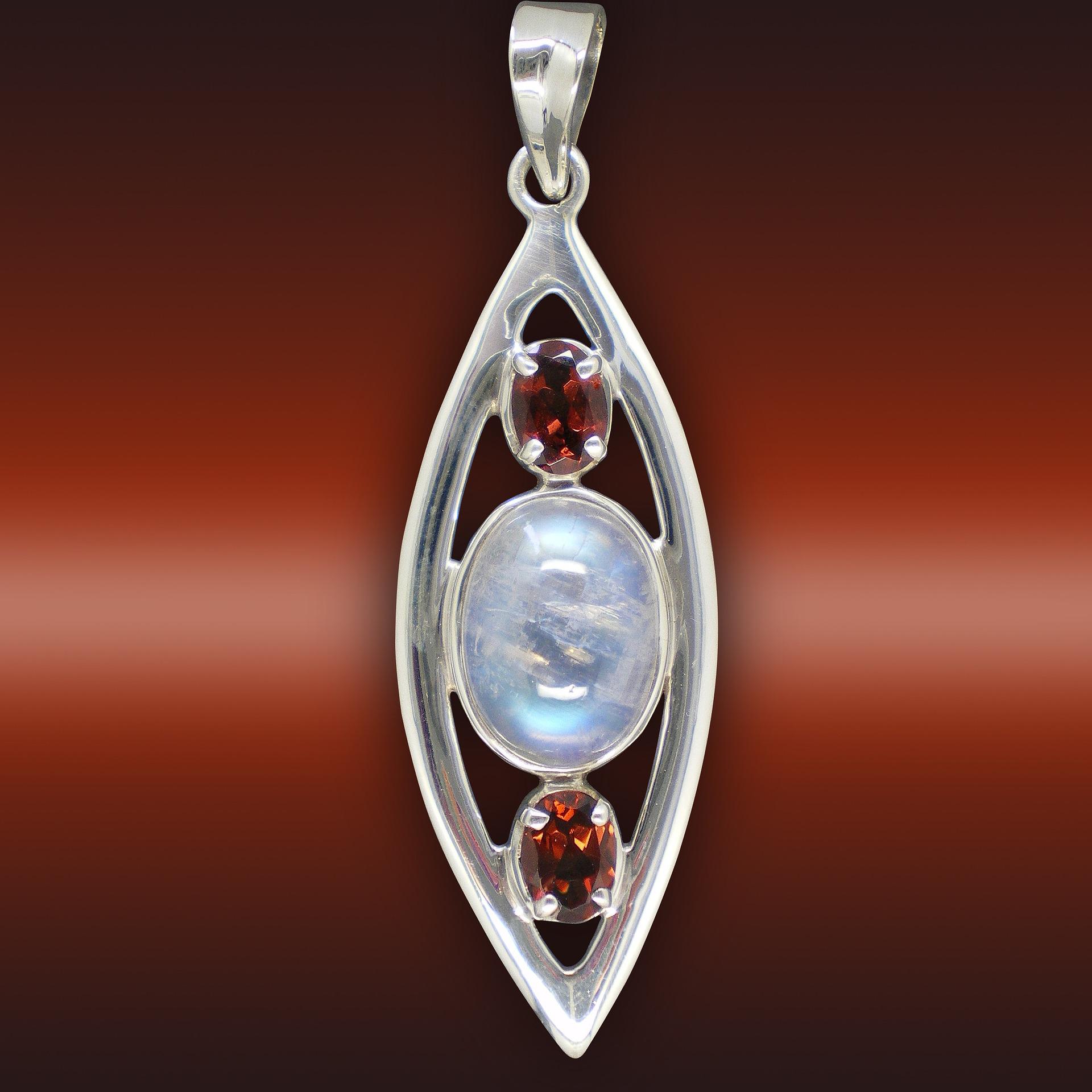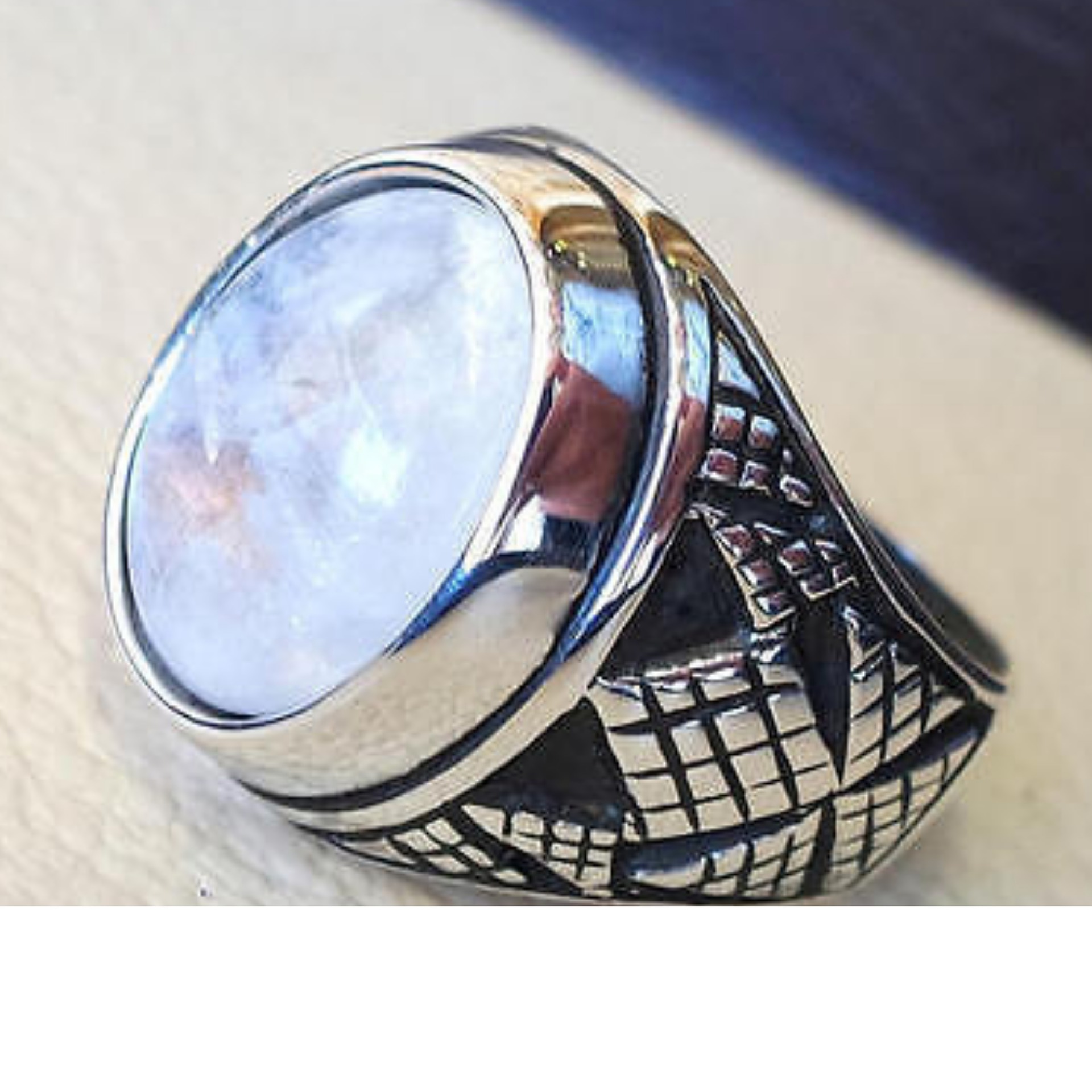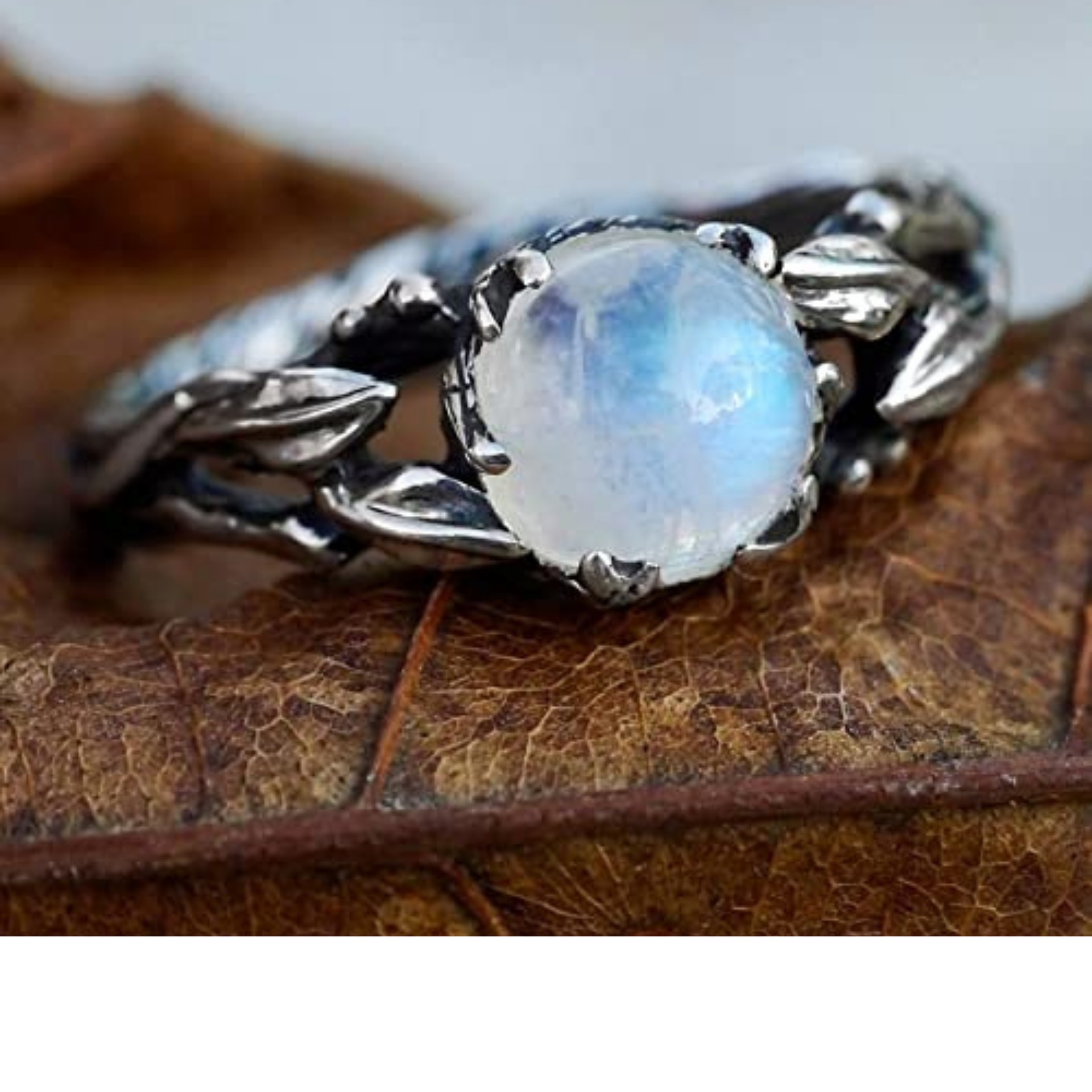For centuries, moonstone has captivated humans with its ethereal beauty. This mesmerizing mineral holds a special place in the world of gemstones, thanks to its unique properties and enchanting play of colors. Today, we embark on a journey to explore what moonstone looks like, delving into its characteristics, origins, and popular uses.
The Enigmatic Appearance
Moonstone is a variety of the feldspar mineral group, known for its characteristic adularescence – a phenomenon where the stone appears to glow from within when light hits its surface. This captivating play of light gives the gem a mystical aura, resembling the moon’s gentle glow on a clear night.
The most common moonstone color is a milky white, often with a bluish sheen. This iconic hue is known as “rainbow moonstone.” However, moonstone can also be found in other colors, such as peach, gray, and green, each with unique allure.
One of the most fascinating aspects of moonstone is its chatoyancy, or “cat’s eye effect.” Some moonstones showcase a distinct band of light that moves across the surface as the stone is turned, resembling a cat’s eye. This effect adds another layer of intrigue to the gem, making it highly sought after by collectors and enthusiasts.
Origins and Lore
Moonstone has a rich history and mythology associated with it. It has been revered in various cultures throughout the ages, attributing different meanings and powers to this captivating gemstone.
Historically, moonstone has been linked with the moon’s energy, hence its name. It has been associated with femininity, intuition, and tranquility, making it a popular choice for jewelry among those seeking to enhance their spiritual connection and emotional well-being.
While moonstones can be found worldwide, some regions are particularly renowned for their high-quality specimens. Sri Lanka, known as the “Land of Gems,” is an essential source of delicate moonstones. Other notable locations include India, Australia, and the United States.
Popular Uses and Designs
Moonstone’s exquisite beauty and symbolism make it a popular choice for various types of jewelry. From delicate earrings to statement necklaces, this gemstone adds a touch of mystique to any piece.
One of the most iconic designs featuring moonstone is the moonstone ring. The stone’s shape and size often lend themselves well to intricate settings that highlight its natural glow. Moonstone rings are beloved by those seeking a unique and enchanting piece to adorn their hands.
Aside from jewelry, moonstone is also used in other decorative objects. It can be found in sculptures, pendants, and even carved into beautiful figurines. Its captivating play of colors makes it an excellent choice for ornamental pieces that add a touch of magic to any space.
Beyond its aesthetic appeal, moonstone is also believed to possess healing properties. It is said to support emotional balance, enhance intuition, and promote a sense of calmness and peace. Many people use moonstone during meditation or as a talisman for protection and spiritual growth.
Unveiling the Beauty
In conclusion, moonstone is a gem that truly lives up to its magical reputation. With its ethereal glow, mesmerizing play of colors, and rich history, moonstone continues to captivate jewelry enthusiasts and spiritual seekers alike.
Whether you admire its otherworldly charm from a pendant around your neck or gaze upon its alluring glow in a carefully crafted ring, moonstone is a treasure that never fails to inspire awe and wonder.
The Significance of Moonstone in Different Cultures
Throughout history, moonstone has held great cultural significance in various societies worldwide. In ancient Rome, moonstone was believed to be formed from moonbeams and was associated with the goddess Diana, the moon goddess of hunting and childbirth. It was also believed to bring good fortune. Similarly, in India, moonstone is considered a sacred gemstone associated with the Hindu deity Chandra, the moon god. It is believed to bring calmness and balance to the wearer, enhance fertility, and promote a healthy pregnancy. In many other cultures, moonstone is believed to have mystical properties, such as warding off evil spirits and stimulating emotional healing.
Varieties and Phenomena of Moonstone
Moonstone is not a single gemstone but a variety of the mineral feldspar. There are several different varieties of moonstones, all exhibiting their unique characteristics. One of the most sought-after varieties is the rainbow moonstone, which displays a captivating adularescence – a floating play of light caused by light scattering between the mineral’s internal layers. This phenomenon gives the stone a mesmerizing glow that emanates from within. Another intriguing variety is the cat’s eye moonstone, which exhibits chatoyancy – a band of concentrated light that resembles a cat’s eye. This optical effect adds depth and intrigue to the stone, making it highly valued by collectors and enthusiasts.
Caring for Your Moonstone Jewelry
To ensure that your moonstone jewelry remains pristine, it is essential to take proper care of it. Moonstone has a hardness rating of 6 on the Mohs scale, which means it is relatively soft and can be scratched or damaged easily. Therefore, it is recommended to store your moonstone jewelry separately from other harder gemstones to prevent any potential abrasion. When cleaning moonstone jewelry, avoid using harsh chemicals or ultrasonic cleaners, as they can cause damage to the stone. Instead, gently wipe the surface with a soft, lint-free cloth and a mild soap solution. It is also advisable to remove moonstone jewelry before engaging in activities such as gardening or household chores to protect it from potential damage.
The Healing Properties of Moonstone
In addition to its beauty, moonstone is believed to possess various healing properties. It is commonly associated with promoting emotional balance and inner peace. Moonstone is believed to soothe emotional instability, ease anxiety, and help one channel their intuition and inner wisdom. It is often used by those seeking support during periods of change or transitional phases in life. Moonstone is also thought to have a positive effect on fertility and reproductive health. It is believed to enhance the chances of pregnancy, regulate menstrual cycles, and ease the discomforts of childbirth. Overall, the moonstone is regarded as a stone of nourishment and healing, both emotionally and physically.
The Mystical Aura of Moonstone
If gazing at the night sky during a full moon enchants your soul, prepare to be captivated by moonstone. This gemstone, known for its radiant shimmer and ethereal beauty, has long been associated with the lunar goddess and has a mesmerizing allure. While we have already explored the various colors and forms of moonstone, we now delve deeper into the mystical aura that surrounds this enchanting stone.
A Symbol of Protection and Balance
Beyond its mesmerizing beauty, moonstone is believed to possess mystical properties that protect and balance its wearer. Historically, this gem has been revered as a talisman against negativity and a source of inner peace. The soft glow of moonstone is said to soothe the soul, calm the mind, and restore emotional stability. It is often used by those seeking to find balance and connect with their spiritual side.
The Healing Powers of Moonstone
Moonstone is not only visually captivating but is also believed to possess healing powers. It is commonly associated with female reproductive health, offering support during hormonal changes, childbirth, and menstruation. In addition, moonstone is thought to encourage fertility and aid in regulating the menstrual cycle. This gemstone is also said to relieve emotional tension and enhance intuition, making it a powerful ally for those seeking self-reflection and personal growth.
The Connection to the Moon and Beyond
The connection between the moonstone and the moon itself is undeniable. Just as the moon’s glow illuminates the darkness of the night, moonstone seems to capture the same shimmering essence. It is believed to reflect the moon’s energy onto its wearer, enhancing their intuition and illuminating their path in life. Moreover, some cultures associate moonstone with water, which has long been seen as a conduit between the earthly and divine realms. Thus, moonstone is thought to align the wearer with the energies of the cosmos and facilitate a deeper connection with the spiritual world.
Conclusion
In conclusion, moonstone truly lives up to its reputation as a gem that unveils ethereal beauty. Its mystical aura, symbolic meaning, and healing properties make it a cherished gemstone with visual and spiritual appeal. Whether you are drawn to its radiant shimmer, its protective qualities, or its connection to the moon and beyond, moonstone is undoubtedly a gemstone that captivates the heart and soul. So, embark on a journey to explore the exquisite world of moonstone and let its enchantment guide you to new realms of beauty and serenity.
